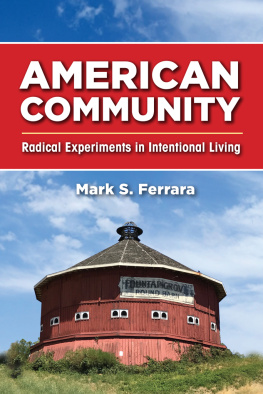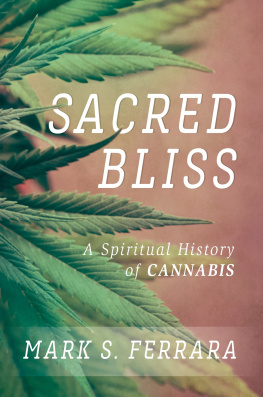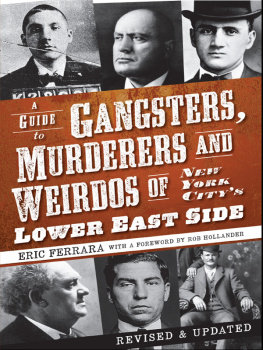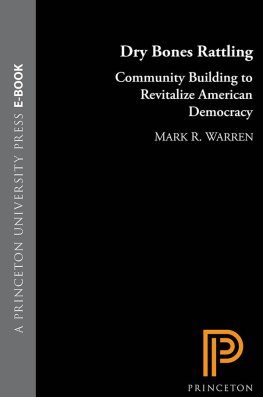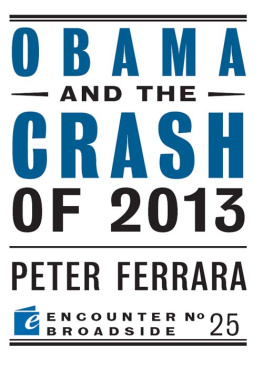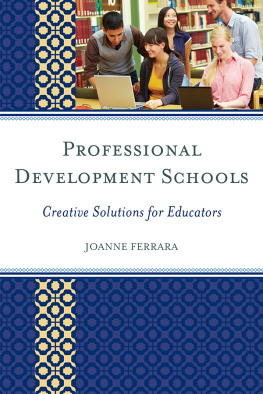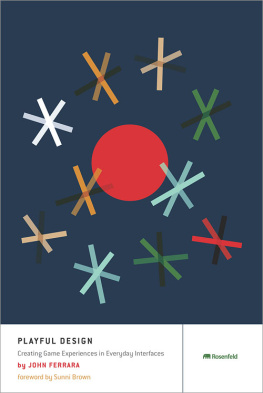Library of Congress Cataloging-in-Publication Data
Names: Ferrara, Mark S., author.
Title: American community : radical experiments in intentional living / Mark S. Ferrara.
Description: New Brunswick : Rutgers University Press, [2019] | Includes bibliographical references and index.
Identifiers: LCCN 2019007533 | ISBN 9781978808232 (hardcover)
Subjects: LCSH: Communal livingUnited StatesHistory. | Collective settlementsUnited StatesHistory. | UtopiasUnited StatesHistory.
Classification: LCC HX653 .F47 2019 | DDC 307.770973dc23
LC record available at https://lccn.loc.gov/2019007533
A British Cataloging-in-Publication record for this book is available from the British Library.
All photographs by the author
Copyright 2020 by Mark S. Ferrara
All rights reserved
No part of this book may be reproduced or utilized in any form or by any means, electronic or mechanical, or by any information storage and retrieval system, without written permission from the publisher. Please contact Rutgers University Press, 106 Somerset Street, New Brunswick, NJ 08901. The only exception to this prohibition is fair use as defined by U.S. copyright law.

The paper used in this publication meets the requirements of the American National Standard for Information SciencesPermanence of Paper for Printed Library Materials, ANSI Z39.48-1992.
www.rutgersuniversitypress.org
Manufactured in the United States of America
I N THE SUMMER of 1723, Conrad Beissel, seeking solitude, gathered his scanty belongings and trekked further into the remote Conestoga frontier of Pennsylvania. He followed a narrow Native American trail that wound through dense forests of red ash, silver maple, white oak, and pitch pine. The thick underbrush of sweetfern, shadbush, and prickly ash slowed his progress. Short of stature due to the malnourishment that he endured as a child in Eberbach (Germany), we can imagine him stopping occasionally to clear the path and to rest. The quiet hush of the ancient woodlands must have seemed a world away from the continual warfare that had turned the Rhine corridorfrom the high lakes of Switzerland to the Netherlandsinto a field of death during the Thirty Years War, French-Dutch War, and Nine Years War. As a young man, Beissel witnessed thousands of homeless victims of these conflicts wandering the streets. Despite his own deprivation, their suffering touched him to the quick. That sense of compassion for others never left him, and, in the fullness of time, Beissels religious sensibilities would lead him to the American colonies. There, he founded Ephrata Cloister, one of the most successful intentional communities in American history.
Intentional communities are those purposely and voluntarily founded to achieve a specific goal for a specific group of people bent on solving a specific set of cultural and social problems. Their goals vary widely, but they represent a call to action that is simultaneously personal and communal. Intentional communities are often conceived as separate and distinct from larger societies. Researchers might categorize these communities by their location, use of land, methods of building, the actions and behaviors of residentsor define members of such communities by their shared ideologies and points of view, psychological and emotional connections, and common histories and practices. Unlike members of social movements and organizations, or tribes and villages, residents of intentional communities seek to create an entire way of life. They embrace communalism as an ethical end in itself (rather than for the value it creates), and they emphasize economic sharing as a means of achieving collective goals.
Over the centuries, intentional communities have been referred to as communal societies, cooperative communities, alternative societies, communitarian experiments, socialist colonies, communes, collective settlements, and practical utopias. Regardless of the terms used to describeor to derideintentional communities, they have remained a persistent part of the American cultural landscape since the early colonial period. American Community emerges out of a desire to throw light on experiments in intentional living eclipsed by better-known societies that practiced cooperation and collective ownership of property and resources: New Harmony, Oneida, Brook Farm, and Twin Oaks. Rather than revisit these and other intentional communities, already the subject of many fine studies, I propose a journey through four centuries of less conspicuous experiments in purposeful living as a way to highlight a long-standing American concern with social justice and cooperative business enterprise. From among tens of thousands of current and former intentional communities, I have selected forty that uniquely prioritized communal living and the sharing of resources (whether to imitate the apostles, to put into practice another social theory, to live more sustainably, or simply to save money by pooling resources)and therefore might be regarded as expressions of communal socialism in America.
To discover more about these social experiments than may be gleaned from books and articles, I embarked on a series of road trips, logging more than 11,000 miles along the way. In some cases, as with Ephrata Cloister, sustained historical preservation efforts allowed careful explorations of community grounds, restored houses, churches, and businesses. In other instances, like that of the socialist cooperative colony Llano Del Rio in Southern California, little evidence remained of bold attempts to find alternatives to profit-driven capitalist enterprise, but gaining a better sense of place, purpose, and landscape proved invaluable to me. During these travels, I also discovered active vibrant communities dedicated to living more sustainably, such as The Farm in Tennessee and EcoVillage Ithaca in New York. When possible, I spoke with members, observed day-to-day operations, and participated in social activities.
With a few exceptions, I arranged these case studies, and the interpretive perspectives drawn from them, chronologically to highlight the myriad ways in which communalism evolved alongside American societyand to permit patterns of persistence and change to emerge that might easily be lost in a book structured to extract experiences with communitarianism to stoke social reform. In entitling this book

 The paper used in this publication meets the requirements of the American National Standard for Information SciencesPermanence of Paper for Printed Library Materials, ANSI Z39.48-1992.
The paper used in this publication meets the requirements of the American National Standard for Information SciencesPermanence of Paper for Printed Library Materials, ANSI Z39.48-1992.
